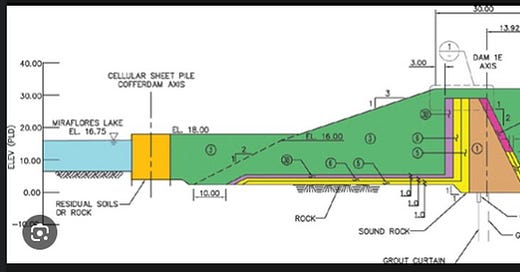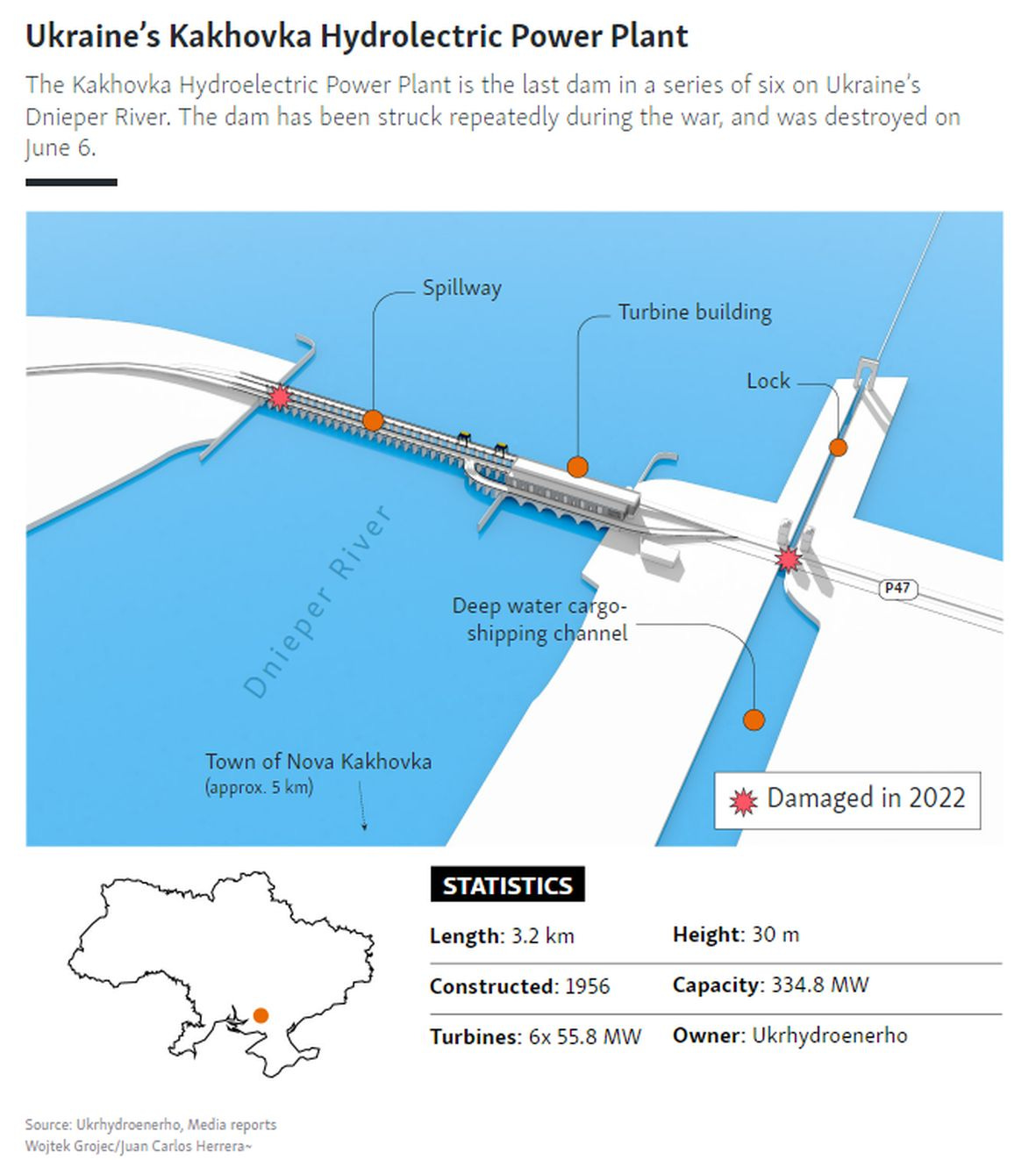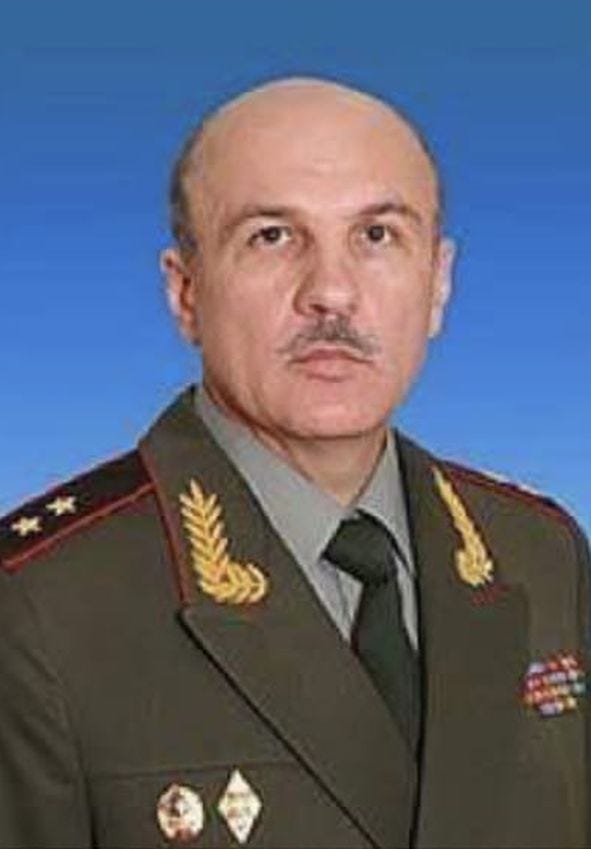I’m still finding it mind-boggling what the Russians have done at the Kakhovka Dam yesterday. I am also remaining at the standpoint that I’m unable to properly describe the consequences of this monstrosity. At most, I can try help with some ‘orientation’.
Thus, today I’ll try to offer something like a ‘question & answers session’ to different questions posted in response to my post from yesterday.
1.) For the start, here what I find are ‘best reads’ in regards of short- and long-term consequences:
- Worst case modelling for Nova Kakhovka dam break (UPDATED)
- How many Ukrainians will remain inside the Country after the War
The only other thing I’ve got to add in this regards is the definition of ‘Ecocide’: conscious destruction of the natural environment – with entirely unpredictable, but disastrous consequences (for humans and the nature alike).
2.) Why these links and why that definition?
If, by any kind of an outright miracle, it happens there’s still anybody who has never heard of the Russian/Soviet ‘strategy’ of ‘Scorched Earth’, then: sure, this is not going to make any kind of sense. Though then: nobody and nothing can help characters in question…
3.) Why am I sure it was the Russians and it wasn’t Ukrainians – without a ‘smoking gun’ (clear evidence)?
There are dozens of online links explaining nonsense like ‘everything you need to know about the Kakhovka Dam’. They’re going to tell you the Kakhovka Dam is 3,200 metres long and 30 metres tall. That’s superficial bullshit, to put it mildly.
Dams like the one of Kakhovka are no ‘simple concrete walls’, and certainly no matchboxes: one can’t ‘stop’ a river with powers of the Dnipro by ‘building a simple wall’. That task is requiring immense volumes of soil and concrete. Of course, there are different types of dams and their constructions. No two dams are exactly the same. But, the bare essence of the dams like the one at Kakhovka are explained on the two illustrations below. As can be seen, their core is made of clay, reinforced by other materials. The ‘concrete wall’ for which most of such dams are ‘famous’, is constructed atop and into the dam: only its upper part – the so-called ‘parapet wall’ – is visible. Thus, that part is only the proverbial ‘tip of an iceberg’.
It’s on hand that a 30-metres-tall dam requires 100+ metres of width. This is necessary because a dam of this size and weight has to survive about 8 bar of static pressure – and that its full length and width, and ‘for thousands of years’: even a minor leak is going to cause a rupture and then a structural collapse. Which is why such dams are designed and constructed with possible strikes with nuclear weapons in mind.
Now have a look at this illustration prepared by the Radio Free Europe/Radio Liberty:
As can be seen it’s focused upon the ‘most obvious-‘, ‘central’ part of the dam, including the spillway, the turbine building, and the lock with the deep water cargo shipping channel. The actual dam is 3,200 metres long: the section visible on this diagram is only some 900 metres long. Indeed, the spillover and the turbine building are only 600 metres long: at their ‘thinnest’ points (parapet wall) - the part visible above the water surface - they’re between 10 and 80 metres thick, though. That way, the constructors kept the ‘most vulnerable’ part of the dam limited in size, but still massive enough to install the hydroelectric power plant inside, and still massive enough to survive the water pressure – and that for ‘thousands of years’…
Result: dams of this kind are colossal, huge, massive constructions, weighting hundreds of thousands of tons. No ’50 HIMARS’ can move that amount of materials. Conclusion is thus on hand: it would take Ukrainians an immense effort to destroy even this ‘vulnerable’ part of the dam by conventional means. That couldn’t happen unobserved. On the contrary, the ‘easiest’ and ‘quickest’ way of demolishing such a construction like the Kakhovka Dam - and especially so ‘with a single blow’, as reported by multiple people living in the area - is through doing so from within: through positioning plenty of explosives within its machinery spaces (the turbine building in this case), because the mass of these are constructed into the dam below the parapet.
Gauging by available photos and videos, this is precisely what has happened.
4.) As about ‘why did they do that?’
In my humble opinion, this is making sense only when one studies one of crucial points about this entire war: the so-called ‘chain of command’ within the Russian Federation.
Obviously, this starts ‘at the head’, with Vladimir Vladimirovich Putin. Nominally, the next level would be the Security Council (high-level officials with intel and security background who are defining the national security strategy), then the Ministry of Defence, the GenStab, and then the Joint Strategic Commands (abbreviated with OSK in Russian)….
…and that’s where there is a ‘shipload of problems’. Crucial in affairs like this war are facts. However, the principal fact in the case of any dictatorship is that there’s no transparency in decision-making processes, and thus there are no facts. There is a huge difference between the official/nominal chain of command and the reality. Nobody can read minds while depending on public statements of dictators is pointless: dictators are (just like their ‘fan base’) always turning and twisting everything, every fact, every statement. Indeed, they’re ‘famous’ for throwing even their official chain of command upside down as necessary, and at every opportunity, the way it fits them, and because they know everything better (which is why dictators ‘must’ rule, too: because nobody else can do it better….). Therefore, nobody knows what is any dictator thinking, and even less so what is a dictator deciding, at what point in time, and thus what is important to somebody like Pudding….
Unsurprisingly, in the case of Pudding, all we have is ‘rumors intelligence’ (RUMINT). Rumours like that he’s isolated even from his ‘closest aides’ already well before the war. That he is living in his own ‘information bubble’. That, nevertheless, since the all-out invasion of 24 February 2022, he is micromanaging combat operations of the Armed Forces of the Russian Federation (VSRF): making calls to battalion-level commands and ordering them what to do, regardless of realities on the battlefield. That this is what caused the massive losses of the VSRF. Foremost, the rumour that, over the last 15 months, he began side-lining any ‘bearers of bad news’: that he is refusing to listen to any kind of ‘bad news’, and declaring them (the ‘bad news’) for ‘Western propaganda’ and their bearers for ‘succumbing to Western propaganda’….
Nothing of this is supported by clear and indisputable facts: at least not with facts that can be directly linked to Pudding.
But, one can draw useful conclusions with help of deduction.
Example: Belgorod. Since 29-30 May, two or three – essentially – battalion-sized groups of Russian ‘militant oppositionals’, or ‘armed insurgents’ of the RDK and the LSR controlled by the GUR MO (Ukrainian military intelligence) have ‘raided’ multiple border villages and towns up to a depth of 10-15km. Theoretically, they should have been smashed since long: pulverised by superior fire-power of the ‘mighty’ VSRF, which demonstratively – at least according to the Pudding-controlled propaganda machinery called ‘the Russian media’ – brought in ‘reinforcements’, too. In practice, the situation is what the Russians tend to call a бардак (bardak, or ‘brothel’, or ‘mess’). One where the VSRF does not know what is going on, nor where, and the civilian authorities even less so. As a consequence, instead of ‘just raiding’ the area, the RDK and the LSR have established themselves in control of a sizeable swath of territory, some 200km wide and 5-10km deep: supported by massive volumes of ZSU’s artillery, they have destroyed multiple battalions – possibly even regiments (every regiment usually includes 2-3 battalions) – of the VSRF while advancing. They have destroyed additional Russian units thrown into counterattacks, too. ‘Best of all’: they have meanwhile hit even Urazovo: a place on the railway connecting Troitske with Biloukraine and Staroblisk. Considering the VSRF’s overdependence on railways for keeping itself supplied: this is nothing short of a catastrophe for the Russians…
‘Unimaginable’?
Deduct on your own. If there would be an intact and functional chain of command in Russia, the VSRF would be able to move superior forces in reaction to this raid already days ago. These superior forces would have found the raiders, fixed and destroyed or driven them out of Russia, days ago. But, if there is no intact and functional chain of command then there is no way to at least move significant reinforcements to this area. It is impossible because Pudding is ignoring ‘bad news’. Because there are no ‘bad news’, there are no GUR MO-controlled forces inside Russia and thus no ‘reinforcements’ are necessary.
And nobody dares - nor even physically can - telling ‘bad news’ to Pudding.
When there is such a situation, the logical result is that the lower points in the chain of command are then, as far as they dare doing so, taking decisions on their own – independently from each other. Because those that dare acting do not dare informing anybody until they have ‘good news’ to report.
Now, some do dare, others not. Some are trying to ‘achieve good news’: so, they send their troops into counterattacks, troops get killed, then they report a success, nevertheless…. Others are just sitting there and getting killed…
One or the other way, the result is always the same: bardak…
5.) How and why does (or would) this matter for the situation in regards of the Kakhovka Dam?
Up front: keep in mind that the culprit is the one who destroyed the dam. Not the one who ‘might have had the reasons to do so’….
Secondly, while it’s a matter of fact that the VSRF has repeatedly received orders to run a genocide in Ukraine, I’ll not even try to go into guessing whether this is valid for this case: i.e. whether it was Putin or somebody else who has issued the order for destruction of the dam.
What is certain is that the authority responsible for the VSRF units along the Dnipro River is the Group of Russian Forces Dnepr (Russian name for the Dnipro), commanded by Colonel-General Oleg Makarevich.
Ukrainian sources say Makarevich issued the order for destruction to the command of the headquarters of the I Battalion, 205th Motor Rifle Brigade, VSRF, which controlled the southern side of the Kakhovka Dam, including the spillover and the turbine building. Whether this is truth or not: no idea.
But, when one considers Putin’s bardak, this is making lots of sense. Here’s the why.
Because under the current circumstances within the VSRF, the mass-murder of XY-thousands of people, destruction of the nature, destruction of water-supply for two thirds of the Kherson Oblast and for the Crimea…. do not matter. It does not matter what comes after.
All that matters in Putin’s bardak are ‘good news’.
And the ‘good news’ from this act is that the Group of Forces Dnepr, commanded by some idiot named Makarevich, has fulfilled its mission – because the ZSU can’t cross the river.
‘Awful’? ‘Impossible’? ‘Insane’? ‘Unimaginable’?
Call it whatever you like but: it’s the logical result of decades of the System Putin. Of unaccountability, of indoctrination with jealousy, and of a self-inducted break-down in the chain of command resulting in the ‘need for good news’.








Thanks Tom! A really good insight into the political and cultural side of this. We mirror image Russia at our peril. Except for a tiny minority, Russians think completely differently from westerners--and anyone who doesn't realize this has already lost.
U.S. and allies should ease the "do not attack Russia with our arms" ban to something like "do not attack DEEP inside Russia with our arms" and ZSU could go along the border from Urazovo to Crimea.